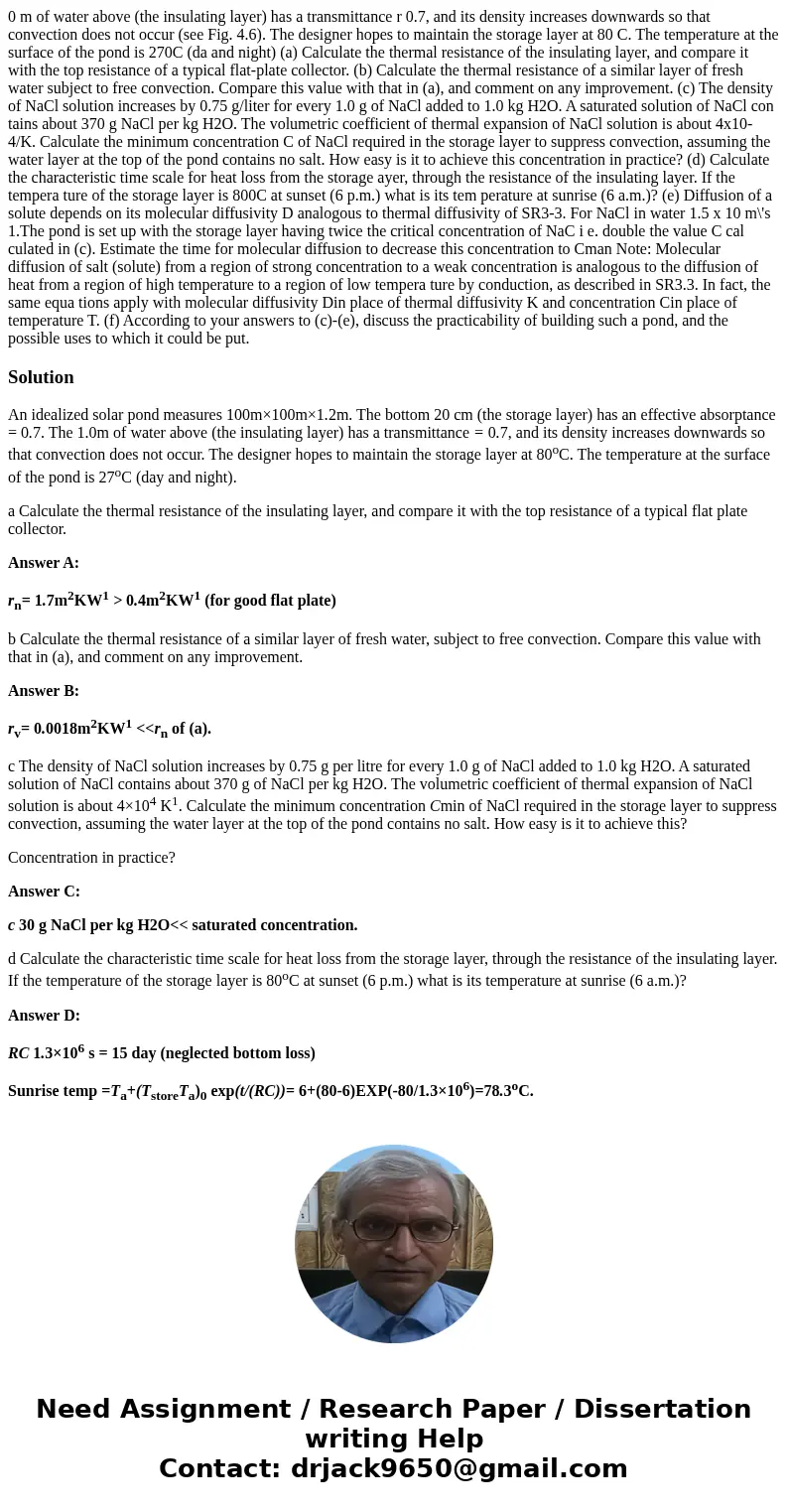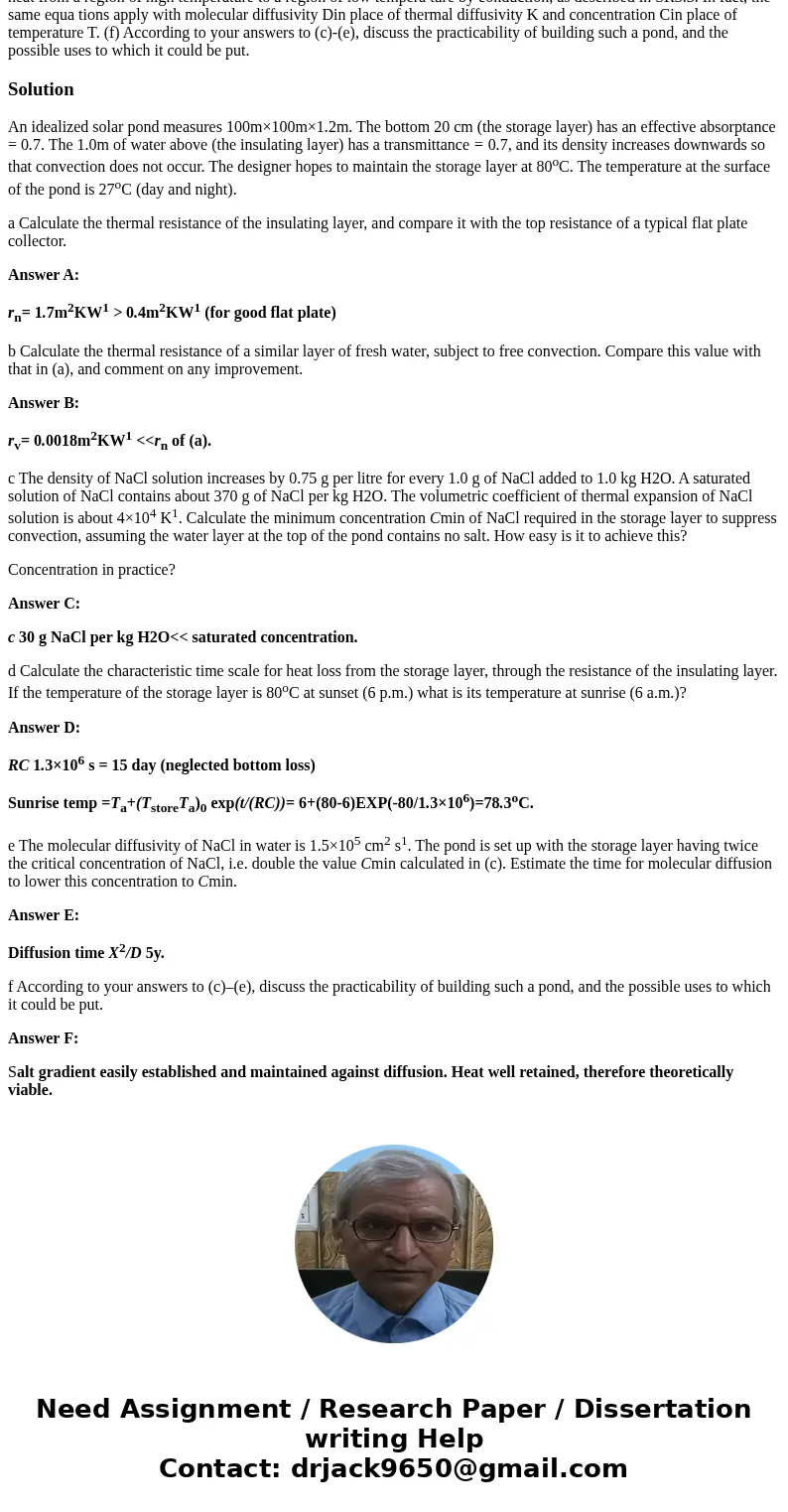0 m of water above the insulating layer has a transmittance
Solution
An idealized solar pond measures 100m×100m×1.2m. The bottom 20 cm (the storage layer) has an effective absorptance = 0.7. The 1.0m of water above (the insulating layer) has a transmittance = 0.7, and its density increases downwards so that convection does not occur. The designer hopes to maintain the storage layer at 80oC. The temperature at the surface of the pond is 27oC (day and night).
a Calculate the thermal resistance of the insulating layer, and compare it with the top resistance of a typical flat plate collector.
Answer A:
rn= 1.7m2KW1 > 0.4m2KW1 (for good flat plate)
b Calculate the thermal resistance of a similar layer of fresh water, subject to free convection. Compare this value with that in (a), and comment on any improvement.
Answer B:
rv= 0.0018m2KW1 <<rn of (a).
c The density of NaCl solution increases by 0.75 g per litre for every 1.0 g of NaCl added to 1.0 kg H2O. A saturated solution of NaCl contains about 370 g of NaCl per kg H2O. The volumetric coefficient of thermal expansion of NaCl solution is about 4×104 K1. Calculate the minimum concentration Cmin of NaCl required in the storage layer to suppress convection, assuming the water layer at the top of the pond contains no salt. How easy is it to achieve this?
Concentration in practice?
Answer C:
c 30 g NaCl per kg H2O<< saturated concentration.
d Calculate the characteristic time scale for heat loss from the storage layer, through the resistance of the insulating layer. If the temperature of the storage layer is 80oC at sunset (6 p.m.) what is its temperature at sunrise (6 a.m.)?
Answer D:
RC 1.3×106 s = 15 day (neglected bottom loss)
Sunrise temp =Ta+(TstoreTa)0 exp(t/(RC))= 6+(80-6)EXP(-80/1.3×106)=78.3oC.
e The molecular diffusivity of NaCl in water is 1.5×105 cm2 s1. The pond is set up with the storage layer having twice the critical concentration of NaCl, i.e. double the value Cmin calculated in (c). Estimate the time for molecular diffusion to lower this concentration to Cmin.
Answer E:
Diffusion time X2/D 5y.
f According to your answers to (c)–(e), discuss the practicability of building such a pond, and the possible uses to which it could be put.
Answer F:
Salt gradient easily established and maintained against diffusion. Heat well retained, therefore theoretically viable.


 Homework Sourse
Homework Sourse